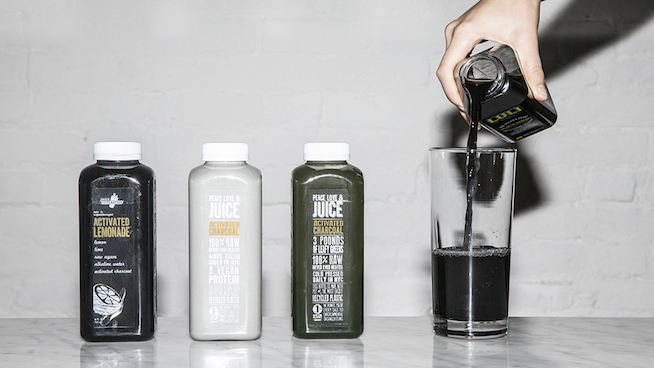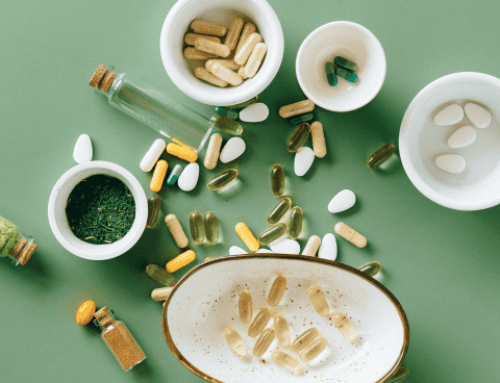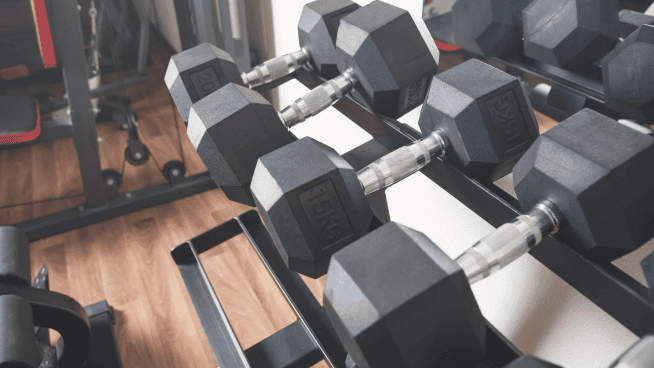Why Are People Drinking Charcoal?
![]()
“Go chug some charcoal” sounds more like a G-rated insult than a legitimate nutrition instruction. But believe it or not, charcoal has become the newest trendy juice and smoothie ingredient. Specifically, activated charcoal. Activated charcoal results from heating regular charcoal to the point where it becomes more porous. Supposedly, those little pockets in the activated charcoal are part of the secret to its nutritional benefits.
But is activated charcoal really a miraculous health supplement or nothing more than a proverbial lump of coal? STACK talked to Leslie Bonci, director of sports nutrition at the University of Pittsburgh Medical Center for Sports Medicine and dietitian for the Pittsburgh Steelers, and Brian St. Pierre, Registered Dietitian and nutrition coach at Precision Nutrition, to find out whether this new trend is backed by science.
How Does It Work?
According to an article in the Journal of Medical Toxicology, activated charcoal is typically made by taking a pulverized substance such as sawdust or coconut and heating it to high temperatures—roughly between 1,100 and 1,600 degrees fahrenheit. The high heat “erodes the internal surfaces of the product and thereby increases its adsorptive surface area.” (Adsorptive means the ability to absorb substances.)
A 50-gram dose of activated charcoal has the surface area of roughly seven football fields. This means a small amount has a relatively incredible capacity for absorption. For this reason, activated charcoal has historically been used for things like gas masks, water purifiers and sewage treatment. It is also frequently used orally to combat poisonings and overdoses, since it can absorb certain potentially fatal toxins.
This medical use is likely what led people to believe that activated charcoal has magical, toxin-sucking powers and is thus a worthy addition to super juices and smoothies. Supposedly, the activated charcoal in these drinks absorbs the toxins in your body, which in turn improves your skin, aids digestion, whitens your teeth and improves overall health.
RELATED: Why Every Athlete Should Drink Tea
Should I Drink It?
Although activated charcoal does have impressive adsorptive powers, believers in its amazing capacity for healing overestimate the exclusivity of its absorption. Activated charcoal absorbs different substances at different rates, and there simply hasn’t been enough research to conclude that the benefits outweigh the negatives.
Bonci says, “The big medical use of activated charcoal is for poison overdose, which for me raises a red flag right away. Yes, activated charcoal can prevent poisons from being absorbed by the body, which is a good thing; but it may also bind beneficial nutrients, vitamins and phytonutrients—such as those in the fruits and veggies in the juices it’s being added to. If these nutrients are being absorbed, they cannot be of benefit to the body.”
So activated charcoal’s adsorptive nature is a double-edged sword. Essentially, experts have no reason to believe it doesn’t also absorb the good things in your body, such as the nutrients you get from whole foods, in addition to toxins.
“It’s adsorbent capacity is not specific—it could potentially bind to nearly anything, including many of the nutrients in the drinks, which will prevent their absorption! It seems somewhat counterproductive to me,” says St. Pierre. “I don’t imagine consuming it on occasion will hurt, but I don’t think it will provide much benefit. Quite frankly, it seems no one really knows at the moment.”
Until further research is conducted, activated charcoal could very well be absorbing more beneficial nutrients than toxins from your body. You also need to think about any prescription drugs you’re taking. Bonci says, “Activated charcoal can prevent or slow the combination of certain prescription drugs”—which is obviously problematic if you’re on medication.
What’s It Taste Like?

Photo: Juice Generation
OK, so activated charcoal may not be the miracle supplement that certain juice vendors believe it to be. We won’t know until further research is conducted. But we know what you’re really wondering—what the heck does it taste like?
Since activated charcoal is a popular ingredient in the trendy juice bars of New York City, I reached out to Maddy Lucier, an associate editor for STACK in NYC, to give an activated charcoal concoction a try. She kindly obliged and stopped by Juice Generation, a popular NYC juice bar chain, to pick a bottle of their “Activated Protein,” whose ingredients include raw almonds, raw hemp seeds, dates, vanilla beans and, of course, activated charcoal.
“Activated Protein” has a milky-gray color due to its light-colored ingredients like almonds and hemp seeds, while the “Activated Lemonade” and “Activated Greens” varieties are more jet black. Despite the drinks’ forbidding appearance, Lucier actually found the concoction quite palatable. “All I could taste was the dates and the vanilla, and possibly the hemp seeds,” she said. “I’ve had a hemp-vanilla-date drink before, and it tastes pretty much the same. I guess there was a slightly earthy aftertaste.”
Juice Generation also has a “Hemp Protein Milk,” which is similar in ingredients to their “Activated Protein”—except for the activated charcoal.
It’s worth noting that Lucier snagged the last bottle of “Activated Protein” in stock at this particular Juice Generation location, so plenty of people must be giving these unique drinks a try. But you might be better off sticking to your standard fruits and veggies rather than opting for a pricy drink (a 16-ounce bottle goes for $10) whose nutritional benefits are still a big question mark.
“My bottom line is, enjoy fruits and veggies in your smoothies and juices, but keep the charcoal in your grill—not in what you swill,” Bonci says.
RELATED: What to Eat and Drink Before Exercise
RECOMMENDED FOR YOU
MOST POPULAR
Why Are People Drinking Charcoal?
![]()
“Go chug some charcoal” sounds more like a G-rated insult than a legitimate nutrition instruction. But believe it or not, charcoal has become the newest trendy juice and smoothie ingredient. Specifically, activated charcoal. Activated charcoal results from heating regular charcoal to the point where it becomes more porous. Supposedly, those little pockets in the activated charcoal are part of the secret to its nutritional benefits.
But is activated charcoal really a miraculous health supplement or nothing more than a proverbial lump of coal? STACK talked to Leslie Bonci, director of sports nutrition at the University of Pittsburgh Medical Center for Sports Medicine and dietitian for the Pittsburgh Steelers, and Brian St. Pierre, Registered Dietitian and nutrition coach at Precision Nutrition, to find out whether this new trend is backed by science.
How Does It Work?
According to an article in the Journal of Medical Toxicology, activated charcoal is typically made by taking a pulverized substance such as sawdust or coconut and heating it to high temperatures—roughly between 1,100 and 1,600 degrees fahrenheit. The high heat “erodes the internal surfaces of the product and thereby increases its adsorptive surface area.” (Adsorptive means the ability to absorb substances.)
A 50-gram dose of activated charcoal has the surface area of roughly seven football fields. This means a small amount has a relatively incredible capacity for absorption. For this reason, activated charcoal has historically been used for things like gas masks, water purifiers and sewage treatment. It is also frequently used orally to combat poisonings and overdoses, since it can absorb certain potentially fatal toxins.
This medical use is likely what led people to believe that activated charcoal has magical, toxin-sucking powers and is thus a worthy addition to super juices and smoothies. Supposedly, the activated charcoal in these drinks absorbs the toxins in your body, which in turn improves your skin, aids digestion, whitens your teeth and improves overall health.
RELATED: Why Every Athlete Should Drink Tea
Should I Drink It?
Although activated charcoal does have impressive adsorptive powers, believers in its amazing capacity for healing overestimate the exclusivity of its absorption. Activated charcoal absorbs different substances at different rates, and there simply hasn’t been enough research to conclude that the benefits outweigh the negatives.
Bonci says, “The big medical use of activated charcoal is for poison overdose, which for me raises a red flag right away. Yes, activated charcoal can prevent poisons from being absorbed by the body, which is a good thing; but it may also bind beneficial nutrients, vitamins and phytonutrients—such as those in the fruits and veggies in the juices it’s being added to. If these nutrients are being absorbed, they cannot be of benefit to the body.”
So activated charcoal’s adsorptive nature is a double-edged sword. Essentially, experts have no reason to believe it doesn’t also absorb the good things in your body, such as the nutrients you get from whole foods, in addition to toxins.
“It’s adsorbent capacity is not specific—it could potentially bind to nearly anything, including many of the nutrients in the drinks, which will prevent their absorption! It seems somewhat counterproductive to me,” says St. Pierre. “I don’t imagine consuming it on occasion will hurt, but I don’t think it will provide much benefit. Quite frankly, it seems no one really knows at the moment.”
Until further research is conducted, activated charcoal could very well be absorbing more beneficial nutrients than toxins from your body. You also need to think about any prescription drugs you’re taking. Bonci says, “Activated charcoal can prevent or slow the combination of certain prescription drugs”—which is obviously problematic if you’re on medication.
What’s It Taste Like?

Photo: Juice Generation
OK, so activated charcoal may not be the miracle supplement that certain juice vendors believe it to be. We won’t know until further research is conducted. But we know what you’re really wondering—what the heck does it taste like?
Since activated charcoal is a popular ingredient in the trendy juice bars of New York City, I reached out to Maddy Lucier, an associate editor for STACK in NYC, to give an activated charcoal concoction a try. She kindly obliged and stopped by Juice Generation, a popular NYC juice bar chain, to pick a bottle of their “Activated Protein,” whose ingredients include raw almonds, raw hemp seeds, dates, vanilla beans and, of course, activated charcoal.
“Activated Protein” has a milky-gray color due to its light-colored ingredients like almonds and hemp seeds, while the “Activated Lemonade” and “Activated Greens” varieties are more jet black. Despite the drinks’ forbidding appearance, Lucier actually found the concoction quite palatable. “All I could taste was the dates and the vanilla, and possibly the hemp seeds,” she said. “I’ve had a hemp-vanilla-date drink before, and it tastes pretty much the same. I guess there was a slightly earthy aftertaste.”
Juice Generation also has a “Hemp Protein Milk,” which is similar in ingredients to their “Activated Protein”—except for the activated charcoal.
It’s worth noting that Lucier snagged the last bottle of “Activated Protein” in stock at this particular Juice Generation location, so plenty of people must be giving these unique drinks a try. But you might be better off sticking to your standard fruits and veggies rather than opting for a pricy drink (a 16-ounce bottle goes for $10) whose nutritional benefits are still a big question mark.
“My bottom line is, enjoy fruits and veggies in your smoothies and juices, but keep the charcoal in your grill—not in what you swill,” Bonci says.
RELATED: What to Eat and Drink Before Exercise












